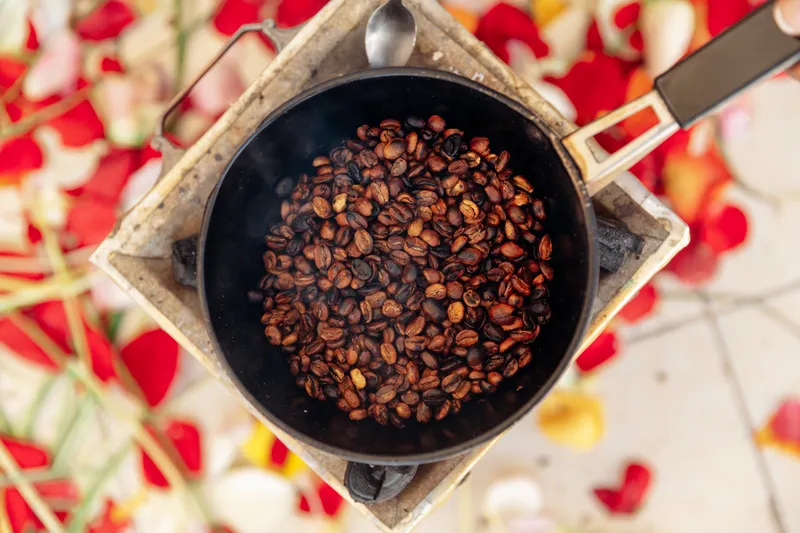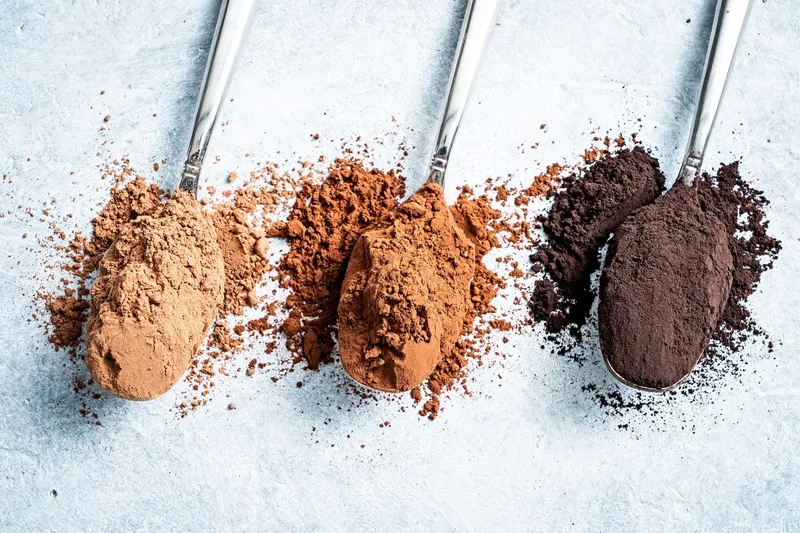Coffee lovers around the world are constantly seeking out the best coffee origin countries to satisfy their taste buds. Understanding the origins of coffee is not only enlightening but also crucial in experiencing the full spectrum of flavours that this ancient beverage has to offer. In this article, we will delve into the fascinating history of coffee cultivation, explore why the origin of coffee is so important, uncover the art of coffee tasting, and highlight both well-known and lesser-known coffee producing countries.
Understanding Coffee Origins
The history of coffee cultivation dates back centuries and is filled with captivating stories of discovery and innovation. It all began in the highlands of Ethiopia, where legend has it that a herder named Kaldi noticed his goats becoming more energetic after consuming the red berries of a certain plant. This discovery led to the cultivation of coffee in the region and eventually spread throughout the world.
The journey of coffee from its humble beginnings in Ethiopia to become one of the most beloved beverages worldwide is a testament to the power of exploration and curiosity. As this fascinating tale unfolds, it takes us through the lush landscapes of Yemen, where coffee cultivation flourished after its introduction from Ethiopia. From there, it made its way to the bustling markets of the Ottoman Empire, where it gained popularity and became an integral part of social and cultural life.
As the demand for coffee grew, so did the need for its cultivation in different parts of the world. This led to the establishment of coffee plantations in countries like Brazil, Colombia, and Vietnam, which are now renowned for their coffee production. Each region brings its own distinct flavours and characteristics to the table, creating a diverse and vibrant coffee culture.

The Importance of Coffee's Origin
While coffee is grown in various regions across the globe, the origin of the beans has a significant impact on the taste and character of the final cup. Factors such as soil composition, climate, altitude, and harvesting methods all contribute to the unique flavours and aromas found in different coffee varieties.
For example, coffee beans grown in the volcanic soils of Guatemala are known for their rich and chocolaty flavours, while those from the high-altitude regions of Ethiopia exhibit floral and fruity notes. The distinct terroir of each coffee-growing region leaves its mark on the beans, resulting in a wide range of flavour profiles for coffee enthusiasts to explore.
Furthermore, the cultivation and processing methods employed in different regions also play a crucial role in shaping the final product. Some regions prefer traditional methods such as sun-drying the coffee cherries, while others employ modern techniques like mechanical drying or wet processing. These methods can enhance or alter the flavours, acidity, and body of the coffee, adding another layer of complexity to the brew.
Understanding the origin of coffee allows us to appreciate the diversity and intricacies of this beloved beverage. It invites us to embark on a sensory journey, exploring the nuances of flavour and aroma that arise from different coffee-growing regions. Whether you prefer a bold and earthy cup from Sumatra or a bright and citrusy brew from Kenya, each sip tells a story of the land it came from, connecting us to the people and places behind our morning ritual.
The Art of Coffee Tasting
Tasting coffee is an art form that requires practice and a keen sense of observation. Skilled coffee tasters can discern a multitude of flavours and aromas present in a single cup. By understanding the intricacies of coffee tasting, enthusiasts can fully appreciate the nuances offered by different origin countries.
Identifying Flavors in Coffee
The first step in coffee tasting is to take note of the fragrances that arise from the cup. Aromas can vary widely, ranging from floral and fruity to nutty and chocolaty. The aroma of coffee is influenced by various factors, including the type of beans, the roasting process, and even the brewing method. Each of these factors contributes to the unique scent that wafts from the cup.
After inhaling the aromas, the taster takes a small sip, allowing the flavours to coat the palate. The taste experience can reveal notes of citrus, berries, caramel, or even earthy undertones. These flavours are a result of the chemical compounds present in the coffee beans. For example, the acidity of the coffee is determined by the presence of certain acids, such as citric acid or malic acid. The sweetness can be attributed to sugars that develop during the roasting process. The complexity of flavours in coffee is truly remarkable, and each cup offers a new adventure for the taste buds.
How Origin Affects Taste
Each coffee origin country has its own distinct flavour profile. For example, beans from Brazil often exhibit a smooth and nutty taste, while those from Colombia are renowned for their fruity acidity. Ethiopia, as the birthplace of coffee, offers a diverse range of flavours, from bright and floral to rich and wine-like.
These flavour profiles are influenced by a combination of factors, including the climate, soil conditions, and cultivation methods in each region. In Brazil, the warm climate and fertile soil contribute to the development of beans with a mellow and nutty flavour. In contrast, the high altitudes and volcanic soil of Colombia produce beans with bright and tangy acidity. Ethiopia, with its diverse microclimates and traditional processing methods, produces coffee that is known for its complexity and distinctiveness.
Exploring the different flavours offered by coffee from different origin countries is like embarking on a journey around the world. Each sip is an opportunity to explore the unique characteristics of a particular region and appreciate the craftsmanship that goes into producing a quality cup of coffee.

Top Coffee Producing Countries
When it comes to coffee production, certain countries stand out for their exceptional output and quality. Let's explore three of the top coffee origin countries:
Brazil: The Coffee Giant
Brazil is the largest producer of coffee globally, accounting for a significant portion of the world's supply. Its coffee industry is deeply rooted in the country's history and culture, dating back to the early 18th century. The Brazilian coffee plantations stretch across vast landscapes, covering thousands of acres of fertile soil.
With its ideal climate, Brazil offers a staggering variety of flavours, satisfying the diverse preferences of coffee lovers worldwide. One of the most famous Brazilian coffee varieties is Santos, known for its mild and nutty taste. The beans are carefully harvested and processed, ensuring the highest quality and flavour profile.
Furthermore, Brazil's coffee production involves a combination of traditional and modern farming techniques. Many farms still employ manual labour for harvesting, where skilled workers carefully pick the ripe cherries by hand. This meticulous process ensures that only the best beans make it into the final product.
Colombia: Quality Over Quantity
Colombia is renowned for its high-quality arabica coffee, which is considered one of the finest in the world. The country's unique geography and climate contribute to the exceptional flavour profiles found in Colombian coffee. The mountainous terrain, combined with the careful attention given to cultivation and processing, results in beans with a distinctive balance of acidity, sweetness, and body.
Colombian coffee production is characterized by small-scale farms, often owned by families who have been cultivating coffee for generations. The farmers take great pride in their work, carefully tending to the coffee plants and employing sustainable farming practices. The cherries are selectively hand-picked when they are at the peak of ripeness, ensuring the highest quality beans.
Once harvested, the coffee beans go through a meticulous process of washing, fermenting, and drying. This careful processing enhances the flavour characteristics and ensures consistency in every cup of Colombian coffee. The result is a rich and flavorful brew that delights coffee connoisseurs around the world.
Ethiopia: The Birthplace of Coffee
Ethiopia holds a special place in the hearts of coffee enthusiasts as the birthplace of this beloved beverage. The country's rich coffee heritage dates back centuries, with legends of goats discovering the energizing properties of coffee cherries. Today, Ethiopia is known for its vibrant coffee culture and diverse range of flavours.
Ethiopian coffee is grown in different regions, each offering unique taste profiles. One of the most well-known Ethiopian coffee varieties is Yirgacheffe, which is characterized by its bright and citrusy flavours. The beans are handpicked and carefully processed to preserve their distinct characteristics.
Another popular Ethiopian coffee variety is Harrar, known for its intense and spicy flavours. Grown in the eastern part of the country, Harrar coffee beans are sun-dried, resulting in a distinctively fruity and wine-like taste. The region's volcanic soil and high altitude contribute to the coffee's exceptional quality.
In Ethiopia, coffee is not just a beverage; it is an integral part of the cultural and social fabric. The traditional Ethiopian coffee ceremony is a cherished ritual that brings communities together. It involves roasting the beans, grinding them by hand, and brewing the coffee in a traditional clay pot called a jebena. The aromatic brew is then served in small cups, symbolizing hospitality and friendship.
India: Diverse Coffee Delights
From the enchanting landscapes of southern India emerges a diverse and flavorful coffee experience. Nestled within the Western Ghats, coffee plantations flourish in a perfect blend of altitude and tropical climate. India's coffee story is told through two main varieties: Arabica and Robusta.
Arabica beans, nurtured at higher altitudes, present a delicate balance of mild acidity and floral notes. Meanwhile, Robusta beans, thriving in lower reaches, offer a bolder profile with hints of chocolate and earthiness.
This vibrant coffee culture embraces sustainable practices, harmonizing cultivation with nature. Handpicked cherries undergo meticulous processing, preserving India's natural beauty in every cup. Discover India's diverse coffee delights – a taste that echoes the nation's rich cultural tapestry.
As we explore the top coffee producing countries, it becomes clear that their coffee industries are not just about quantity but also about the artistry and dedication that goes into cultivating and processing the beans. From Brazil's vast plantations to Colombia's attention to quality and Ethiopia's rich coffee heritage, these countries continue to shape the global coffee landscape with their exceptional flavours and traditions.

Exploring Lesser-Known Coffee Origins
While Brazil, Colombia, and Ethiopia may steal the spotlight, there are several other coffee origin countries that offer unique and exciting flavours:
Vietnam: The Robusta Powerhouse
Vietnam is notable for its robust coffee production, which prefers a warmer climate. Robusta beans from Vietnam possess a bold and earthy flavour, often delivering a deep and strong cup of coffee.
Honduras: The Rising Star
Honduras has emerged as a leading coffee origin country in recent years. Its diverse microclimates and commitment to sustainable practices have resulted in a range of flavours, from bright and fruity to bittersweet and chocolatey.
Sustainable Coffee Production
With the increasing demand for coffee, ensuring sustainable practices in coffee production is crucial for the industry's long-term viability. Thankfully, various initiatives have emerged to champion fair trade and organic coffee:
Fair Trade and Organic Coffee
Fairtrade certifications aim to promote better working conditions and fair wages for coffee farmers. These certifications also encourage sustainable farming practices and support community development in coffee-growing regions. Organic certifications ensure that coffee is grown without the use of harmful chemicals, making it a healthier and more environmentally friendly choice.
The Future of Coffee Farming
The world of coffee is ever-evolving, and the future holds exciting prospects for both coffee farmers and consumers. Advances in technology, such as precision farming and sustainable processing methods, will continue to improve quality and reduce environmental impact. Additionally, consumers' growing interest in ethical sourcing and unique flavours will drive innovation and exploration of new coffee origin countries.
In conclusion, the best coffee origin countries offer a diverse range of flavours and experiences to satisfy the most discerning coffee lovers. Understanding the history, tasting techniques, and characteristics of each coffee origin enhances the enjoyment of this ancient beverage. Whether you prefer the smoothness of Brazilian coffee, the complexity of Ethiopian beans, or the unique profiles of lesser-known origins, embarking on a journey to discover the world's best coffee origins is a truly rewarding experience






